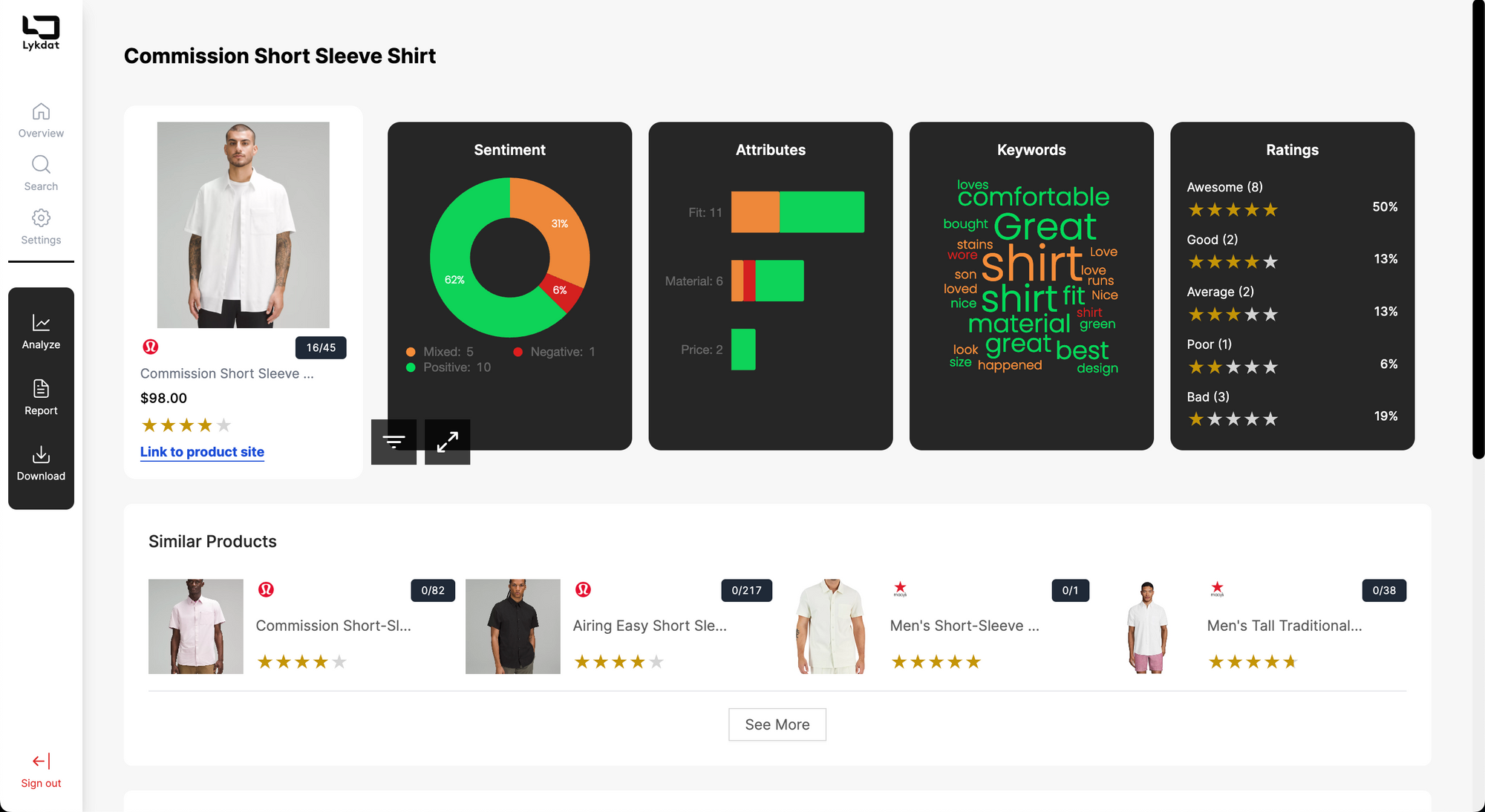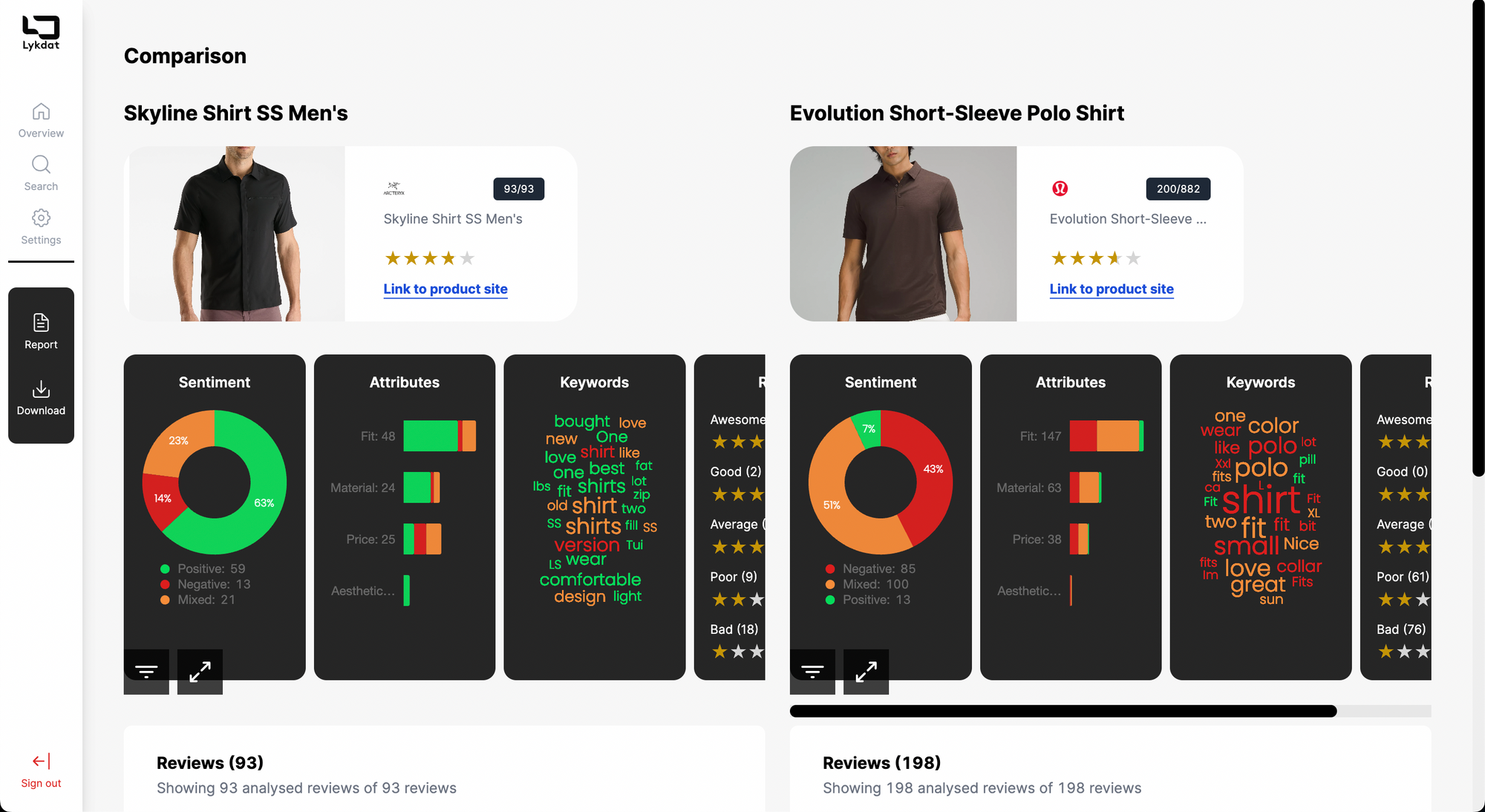Proactive Customer Service For Fashion Businesses
The success of a fashion business now hinges not only on delivering exceptional products but also on providing an unparalleled customer experience. Join us in this article on the journey to proactive customer service.

Customer service is no longer a passive endeavor. It has morphed into a proactive dance, a carefully choreographed performance aimed at dazzling customers who have grown increasingly discerning. Gone are the days when simply offering quality products sufficed. Today, fashion businesses must anticipate and cater to their customers' desires before they even voice them.
The catalyst behind this transformation is the digital age, where information and options abound. Shoppers are no longer passive participants; they are empowered consumers who hold the reins of brand perception firmly in their grasp. Their expectations have evolved with the digital landscape, and so must the approach to customer service.
This article delves into the intricate world of proactive customer service for fashion brands and manufacturers. It explores how these enterprises can leverage the power of customer review analysis and retail market analysis solutions to not just meet but exceed customer expectations.
The Evolution of Customer Expectations in Fashion
To understand the significance of proactive customer service in the fashion industry, we must first delve into the evolving landscape of customer expectations. Over the past decade, several key factors have reshaped how customers interact with fashion brands and what they anticipate:
- The Digital Revolution: The proliferation of smartphones and high-speed internet access has transformed shopping habits. Customers can now browse, compare, and purchase products from virtually anywhere at any time. This newfound convenience has fostered a demand for immediacy and responsiveness in customer service.
- The Influence of Social Media: Social media platforms have become more than just places to connect with friends; they're now hubs of fashion inspiration. Customers can discover trends, follow influencers, and interact directly with brands. Consequently, they expect personalized and rapid responses to their queries and comments.
- The Transparency Era: With information readily available online, customers are savvier than ever. They research products, read reviews, and compare prices before making purchasing decisions. Brands must be transparent, ethical, and trustworthy to meet these new standards.
- The Rise of Ecommerce Giants: Ecommerce giants like Amazon have set a high bar for customer service. Their efficient logistics, easy returns, and responsive support have conditioned customers to expect similar standards from all online retailers, including fashion brands.
- The Power of Peer Reviews: Customer reviews have emerged as influential decision-making tools. Shoppers trust the experiences of their peers more than advertising, making review analysis a crucial aspect of understanding and meeting customer expectations.
- The Demand for Personalization: Customers no longer want generic experiences. They seek personalization in product recommendations, offers, and customer service interactions. Fashion brands that cater to these demands enjoy a competitive edge.
Understanding these shifts in customer expectations is essential for fashion businesses looking to provide proactive customer service. By acknowledging these trends, brands can align their strategies with the desires of modern consumers and gain a competitive advantage in a rapidly evolving industry.
The Role of Review Analysis in Proactive Customer Service
In the fashion industry, where trends change as swiftly as the seasons, staying ahead of customer expectations is both an art and a science. This is where the power of review analysis comes into play. By harnessing AI-driven solutions to identify and understand sentiment hidden within large volumes of customer feedback, fashion brands and manufacturers will not only keep pace with customer preferences but also predict and exceed their expectations.
- Data-Driven Decision Making: Review analysis provides a treasure trove of data. It enables brands to gain insights into what customers love, what they dislike, and what they desire. By analyzing the sentiments, themes, and trends within customer reviews, brands can make informed decisions about product design, pricing strategies, and marketing campaigns.
- Identifying Emerging Trends: The fashion industry thrives on innovation and trendsetting. Review analysis helps brands identify emerging fashion trends early. By spotting patterns in customer reviews, brands can swiftly adapt their collections to align with what's in demand, ensuring they stay ahead of the curve.

- Enhancing Product Development: Customer feedback offers invaluable guidance for product development. Review analysis can reveal specific product features that customers appreciate or areas that need improvement. Brands can use this information to refine their products and create offerings that better cater to customer preferences.
- Optimizing Inventory Management: One of the challenges fashion brands face is managing inventory effectively. Review analysis can aid in inventory optimization by providing insights into which products are likely to be popular. Brands can adjust their production schedules and stock levels accordingly, reducing waste and meeting customer demand more efficiently.
- Tailoring Marketing Strategies: With review analysis, fashion businesses can tailor their marketing strategies to resonate with their target audience. By understanding the language and preferences of their customers, brands can create more effective advertising campaigns and promotional offers.
- Proactive Issue Resolution: Proactive customer service involves addressing potential issues before they escalate. Review analysis allows brands to identify recurring customer complaints or concerns. By taking swift action to resolve these issues, brands can enhance customer satisfaction and prevent negative experiences.
- Personalization and Recommendations: Review analysis can also fuel personalization efforts. By understanding individual customer preferences and purchase history, brands can provide tailored product recommendations and offers, creating a more engaging and satisfying shopping experience.
Retail Market Analysis: A Strategic Advantage
In addition to the powerful insights derived from review analysis, fashion brands and manufacturers can gain a competitive edge by incorporating retail market analysis into their proactive customer service strategies. This strategic approach involves studying market trends, competitor performance, and consumer feedback to make informed decisions that enhance the overall shopping experience.
- Understanding Market Dynamics: To effectively serve their customers, fashion businesses must first understand the broader market dynamics. Retail market analysis provides a panoramic view of the fashion landscape, including current trends, economic conditions, and consumer demographics. Armed with this knowledge, brands can make informed decisions about product offerings and pricing strategies.
- Competitive Intelligence: Keeping a close eye on competitors is essential in the fashion industry. Retail market analysis allows brands to gather competitive intelligence by monitoring the performance of rival products. This information can help brands identify gaps in the market, discover untapped opportunities, and refine their own strategies to outperform the competition.

- Demand Forecasting: Accurate demand forecasting is crucial for optimizing inventory and preventing overproduction. Retail market analysis leverages historical data, market trends, and predictive analytics to help brands anticipate consumer demand. This enables them to stock the right products in the right quantities, reducing waste and ensuring that customers find what they're looking for.
- Effective Pricing Strategies: Pricing is a delicate balancing act in the fashion industry. Retail market analysis provides insights into consumer price sensitivity, competitor pricing strategies, and the perceived value of products. Brands can use this information to set competitive prices that resonate with their target audience.
- Expanding Market Reach: For fashion businesses looking to expand into new markets or demographics, retail market analysis is invaluable. It helps identify emerging markets, assess the feasibility of expansion, and tailor marketing efforts to resonate with local consumers.
Incorporating retail market analysis into proactive customer service strategies provides fashion brands with a holistic view of their industry. It empowers them to make data-driven decisions that align with market trends and consumer expectations. By leveraging the insights from retail market analysis, fashion businesses can create a proactive customer service approach that not only meets but anticipates the needs of their customers, setting the stage for long-term success in a dynamic industry.
Proactive Customer Service In Action
Proactive customer service strategies are essential for fashion brands and manufacturers looking to excel in a competitive market. By leveraging consumer insights and market trends, businesses can anticipate customer needs and provide exceptional service. Here are a few proactive customer service strategies, along with their benefits:
Personalized Recommendations: Use consumer insights and past purchase history to offer personalized product recommendations. This not only enhances the shopping experience but also increases the likelihood of additional sales. For example, if a customer frequently buys activewear, offering recommendations for new arrivals in that category shows that you understand their preferences.
Benefit: Increased sales, improved customer satisfaction, and a stronger connection with shoppers.
Rapid Issue Resolution: Monitor consumer reviews and social media channels for emerging issues or complaints. Address these concerns swiftly and transparently. AI-powered chatbots can provide real-time assistance, helping resolve problems even before customers reach out directly.
Benefit: Enhanced brand reputation, reduced negative feedback, and improved customer loyalty.
Exclusive Offers: Reward loyal customers based on their shopping behavior and reviews. Offer them exclusive discounts, early access to sales, or VIP treatment. This shows appreciation for their ongoing support and engagement.
Benefit: Increased customer retention, word-of-mouth referrals, and a sense of belonging among loyal shoppers.
Product Development: Use customer reviews and feedback to guide product enhancements and innovations. Identify recurring pain points or desired features, and integrate these insights into your product development process.
Benefit: Products that better align with customer preferences, reduced returns, and higher customer satisfaction.
Optimized Inventory: Utilize retail market analytics to predict demand and optimize inventory levels. Avoid overproduction, which can lead to excess waste and markdowns. Data-driven insights help ensure you have the right amount of stock on hand.
Benefit: Reduced operational costs, minimized waste, and improved inventory turnover.
Competitive Pricing: Set competitive prices that align with market trends and customer expectations. Dynamic pricing models can adjust in real-time based on demand and competitor pricing strategies.
Benefit: Attract price-sensitive customers, maintain profitability, and stay ahead of market fluctuations.
Sustainability Initiatives: Embrace sustainability practices throughout your operations, from supply chain management to packaging. Highlight your commitment to eco-consciousness in your marketing efforts to appeal to environmentally conscious consumers.
Benefit: Attraction of eco-conscious customers, improved brand image, and contributions to a more sustainable fashion industry.
Community Building: Foster a sense of community among your customers by creating online forums, social media groups, or newsletters. These platforms allow customers to connect, share experiences, and provide feedback, strengthening their relationship with your brand.
Benefit: Increased customer engagement, word-of-mouth referrals, and valuable feedback channels.
Conclusion
In this age of digital empowerment, fashion brands and manufacturers must embrace a new mantra: staying ahead of customer expectations. The success of a fashion business now hinges not only on delivering exceptional products but also on providing an unparalleled customer experience. This journey begins with proactive customer service.
By implementing these proactive customer service strategies, fashion brands and manufacturers can transform consumer insights and market trends into actions that enhance the overall shopping experience. These strategies not only address current customer needs but also anticipate future expectations, building brand loyalty and long-term success.

